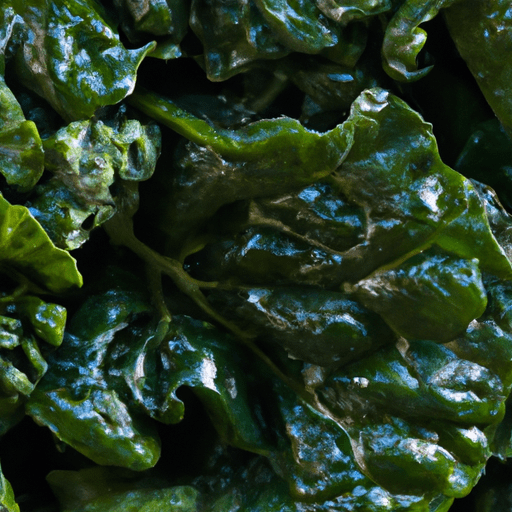Get Your Greens: All About Collards
When it comes to leafy greens, collards often take a backseat to their popular cousins like kale or spinach. However, these nutrient-packed powerhouses have a lot to offer in terms of flavor, versatility, and health benefits. So, let’s dive into the world of collards and discover why they deserve a place in your kitchen!
Taste and Texture
Collard greens have a taste that can be described as robust, earthy, and slightly bitter. Their thick, dark green leaves offer a satisfyingly chewy texture. The flavor intensifies when cooked, making them an excellent addition to hearty dishes.
Common Uses in Cooking
Collards are a staple in Southern cuisine, where they often take center stage in classic dishes like collard greens, a slow-cooked delight. However, their culinary potential goes far beyond traditional preparations. Here are a few popular uses:
1. Sauteed Collards
Sautéing collards with garlic and a touch of olive oil brings out their natural sweetness and softens their texture. They make a delicious side dish, especially when paired with grilled meats or served over creamy polenta.
2. Collard Wraps
Looking for a healthier alternative to tortillas? Collard leaves can be used as a nutritious and gluten-free wrap. Simply blanch the leaves to make them pliable and stuff them with your favorite fillings like hummus, roasted vegetables, or grilled chicken.
3. Collard Chips
If you’re craving a crispy and wholesome snack, try making collard chips. Just drizzle the leaves with a little olive oil, sprinkle with your favorite seasonings, and bake them until they become delightfully crisp. These chips make a fantastic guilt-free option for movie nights or as a crunchy salad topper.
Nutritional Value
Like many leafy greens, collards boast an impressive nutritional profile. They are low in calories but high in essential vitamins and minerals, making them a nutrient-dense addition to any meal. Here are some of the notable health benefits they offer:
Vitamin A: Collards are rich in vitamin A, which is essential for maintaining healthy vision, supporting the immune system, and promoting cell growth.
Vitamin K: With high levels of vitamin K, collards play a crucial role in blood clotting and bone health.
Fiber: Collards are an excellent source of dietary fiber, aiding in digestion and promoting a feeling of fullness.
Antioxidants: Packed with antioxidants, collards help fight inflammation and protect against chronic diseases.
History and Interesting Facts
Collards have a storied history dating back thousands of years. They are believed to have originated in the eastern Mediterranean region and were brought to the United States by African slaves. Collards quickly became a significant part of Southern cuisine due to their resilience, as they are relatively easy to grow in a variety of climates.
In fact, collards are the official state vegetable of South Carolina, honoring their cultural importance within the region. They have also been recognized by various health organizations for their exceptional nutritional benefits.
While collards may not always steal the spotlight, they deserve a place on your plate due to their robust flavor, versatility in cooking, and impressive nutritional profile. So, next time you’re at the market, don’t overlook these leafy greens. Whether you sauté them, wrap them, or turn them into chips, collards are a delicious and healthy addition to any meal.
Collards
Origin: Collards (Brassica oleracea) are a leafy green vegetable that belongs to the same family as cabbage, broccoli, and kale. They are believed to have originated in the Mediterranean region and have been cultivated for thousands of years.
Common Uses: Collards are widely used in Southern cuisine, particularly in dishes such as collard greens, where they are typically slow-cooked with pork or other seasonings. However, they are also used in various other cuisines around the world, including Portuguese, Brazilian, African, and Creole cooking.
Nutritional Benefits: Collards are highly nutritious and packed with vitamins, minerals, and fiber. They are an excellent source of vitamins A, C, and K, as well as folate and calcium. They also provide smaller amounts of iron, manganese, and vitamin B6. Additionally, collards are low in calories and are rich in antioxidants, which help protect against cellular damage.
Unique Properties: One unique property of collards is their thick, sturdy leaves, making them a versatile cooking ingredient. Unlike some other greens, collard leaves hold up well to prolonged cooking, making them ideal for simmering or braising dishes. Their flavor is slightly bitter and earthy, similar to kale but milder.
Historical Significance: Collards have a significant historical and cultural importance, particularly in African American cuisine. They have been grown and consumed by African Americans since the time of slavery in the United States. Collard greens became a symbol of resilience and cultural identity, representing dishes that were created using limited resources, such as pork scraps and starchy foods. Today, collards continue to be celebrated in traditional soul food recipes and are enjoyed by a wide range of people.




Use the share button below if you liked it.
It makes me smile, when I see it.